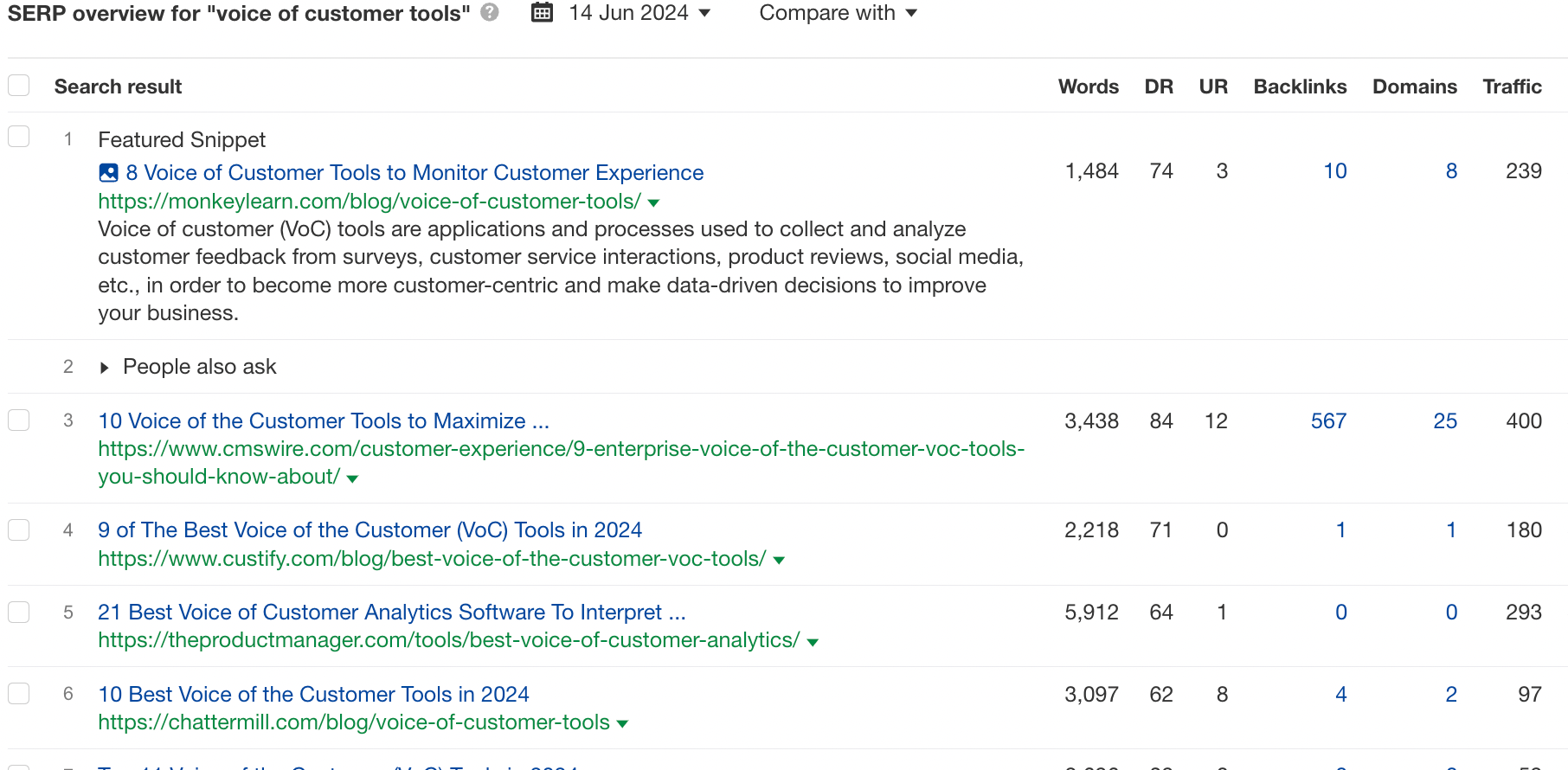This week, I want to teach you another method for finding low-competition keywords.
Last week, I walked you through the "Lowest DR in Top 5" method (that helps you find keywords that high-authority competitors have missed).
This week, I want to teach you another method for finding low-competition keywords.
This one is a little harder.
Unlike the "Lowest DR in Top 5" method, there are no real shortcuts to finding these opportunities.
You must truly know your industry and audience—because this one is all about search intent.
And you have to do a lot of manual keyword research and study the SERPs deeply (say goodbye to your Ahrefs credits now).
Let's dive in.
The "Low Intent Match" Method Method (Part 2)
This method relies on you to understand search intent better than your competitors.
We want to identify an underserved search query. One where none of the content in the top 10 quite delivers what the searcher is looking for.
This often happens when a blog post targets a higher-volume primary "parent" keyword, but still ranks high for a lower-volume secondary keyword.
It might be that the blog post at some point covers that secondary topic, but it also happens often that there just isn't any more relevant content for Google to serve for the secondary query.
There's a lot of nuance to finding these opportunities. And it's finicky, I bet you're already lost in my explanation.
So, let's look at an example.
Example: Voice of Customer Tools & Ranking Above Hubspot
A few years ago, I worked as marketing lead at Sentisum.
Sentisum is an AI tool that analyzes customer feedback data, known as "voice of customer" in the industry.
When looking hungrily for keyword opportunities, I stumbled across a "low intent match" opportunity.
I don't have the full historical SERP data going back that far, but for the bottom-of-funnel term "voice of customer tools" or "voice of customer software" the results looked roughly like this:
- #1: Hubspot: 12 Voice of the Customer Methodologies
- #2: Gartner: Voice of the Customer Reviews 2022
- #3 Alchemer: Voice of the Customer Program
- #4 Customer Alliance: The Voice of the Customer Guide
What do you see?
Literally nobody had written a guide targeting the commercial intent of this keyword "voice of customer tools" and "software".
If memory serves, there wasn't a single blog post out there directly targeting a software or tools listicle.
Interesting, I thought.
Either Google misunderstands the keyword, or there is no content on this topic yet.
So, I create the blog post: "49 Best Voice of Customer Tools".
Within a week or two, that article ranked above Hubspot.
It was a terrible article. But it got 3,000+ clicks per month.
Until competitors saw what we'd done, wrote the same article and now heavily outrank Sentisum:

We won so fast because we were the best to serve the true intent of this query.
In the example, "voice of customer" and secondary keywords "voice of customer program", "voice of customer objectives" and "voice of customer in business" all have similar intent.
One "complete" guide to the subject, likely serves the need of that audience pretty well.
However, someone searching "voice of customer tools" doesn't want to sift through a "complete guide" to find the short section suggesting a couple of tools.
A dedicated "best software" guide serves their needs significantly better.
I've since stumbled across opportunities like this again and again.
They're hard to spot without really digging into the SERPs.
To make it easier, I recommend this method:
- Pull the full keyword list for a topic
- Use a keyword clustering tool to group keywords by SERP similarity
- Go through each cluster group and ask yourself: do these all mean the exact same thing? Am I surprised a keyword is in that group? Does a keyword seem like it doesn't fit within the parent topic?
- Take those finds, list them out, and look at the SERPs to dig deeper.
Instead of fully relying on the current SERPs, this method looks deeper at intent and helps you build content to target that.
This is the "low intent match" method.
Master it and you can even rank above sites like Hubspot.
Stay tuned for next week, where I'll be sharing my third and final tip for finding low-competition keyword opportunities.
—Benny


